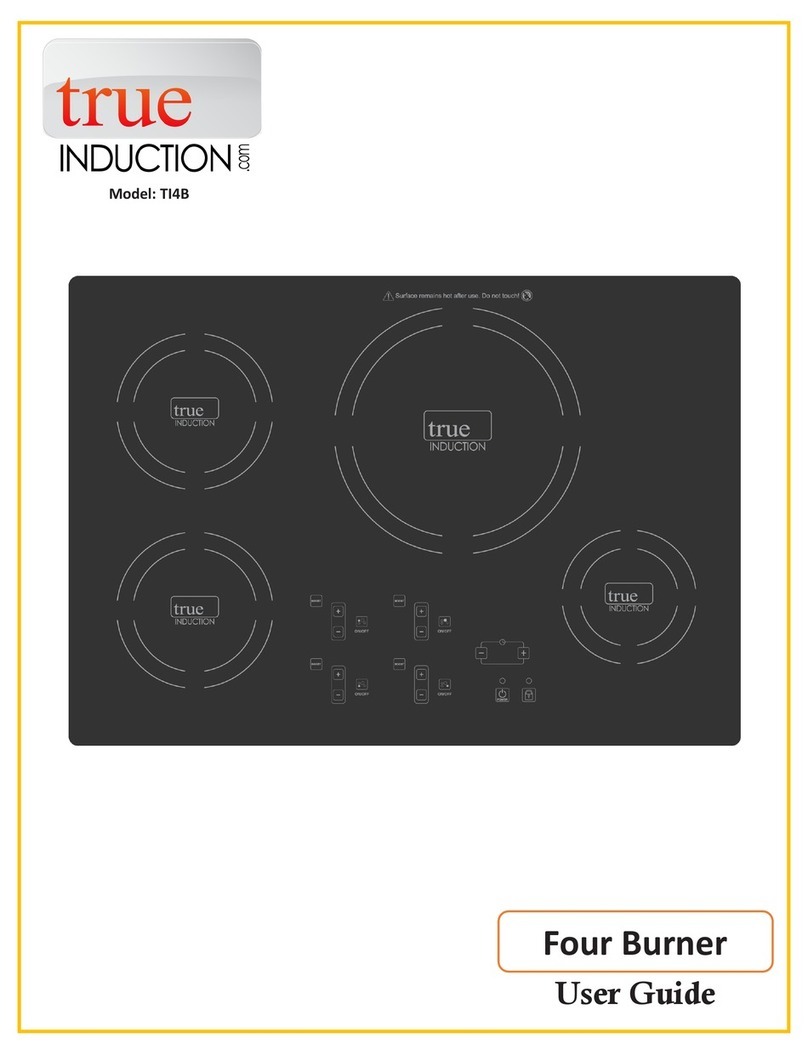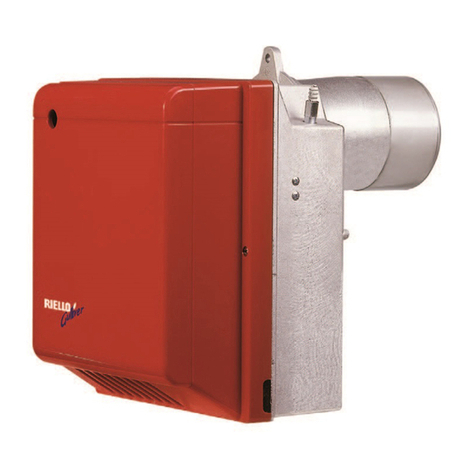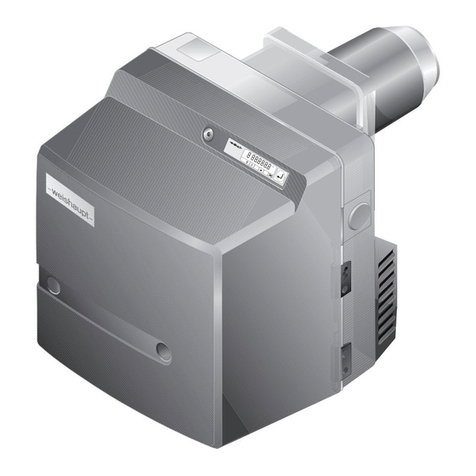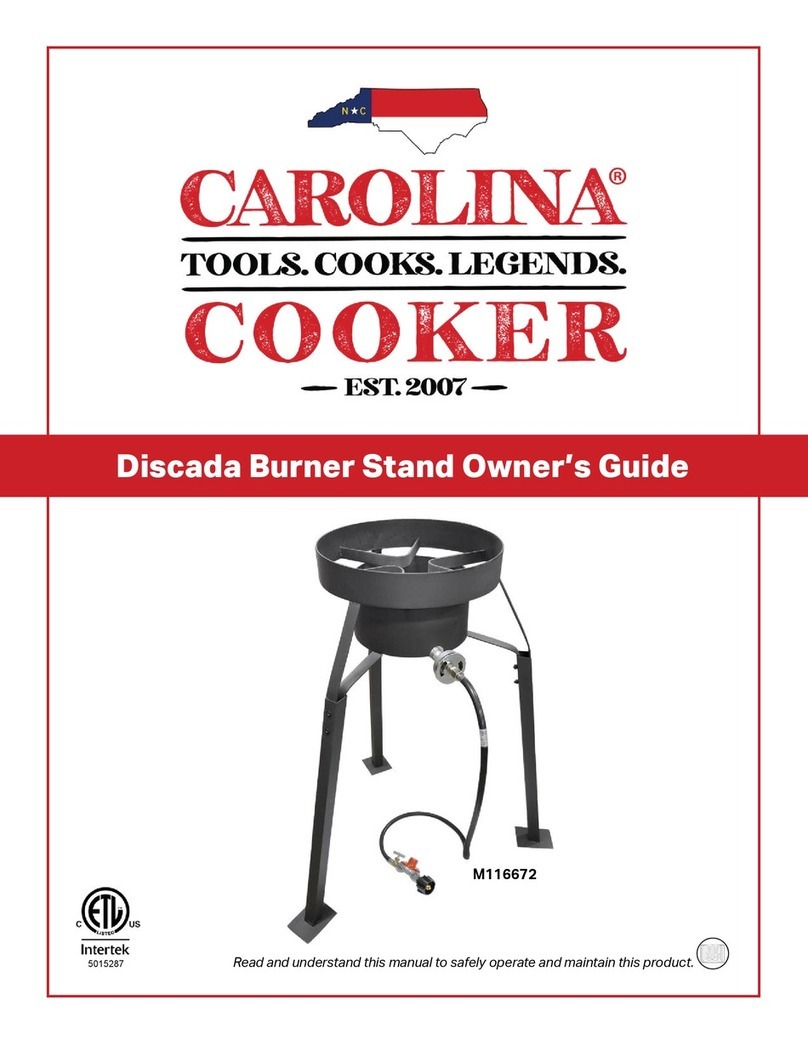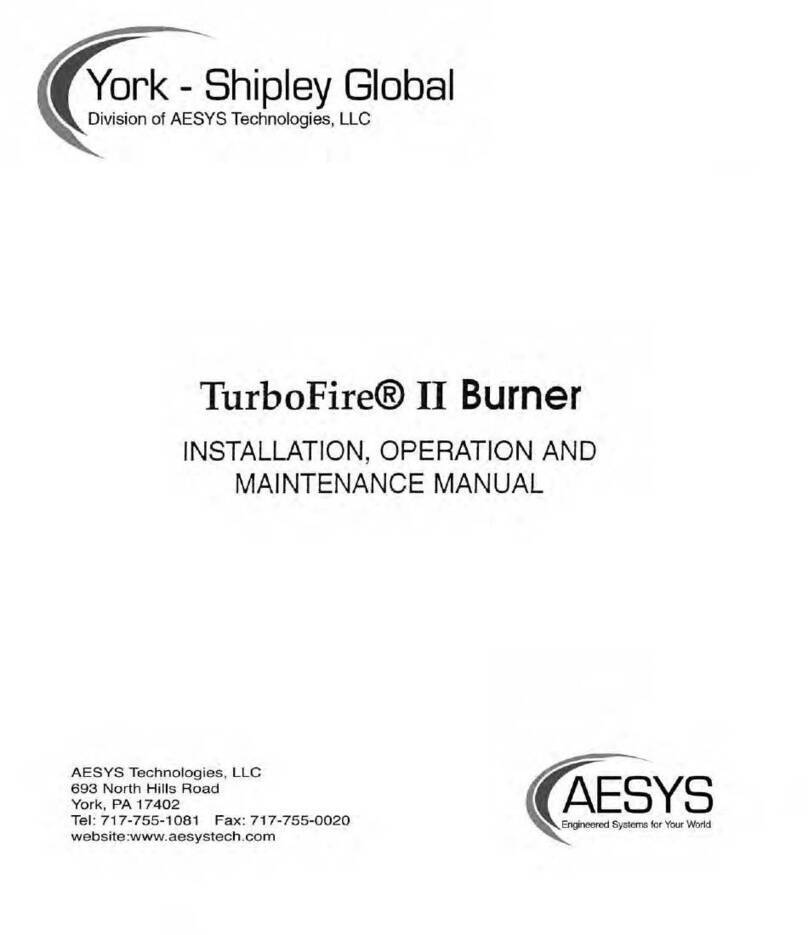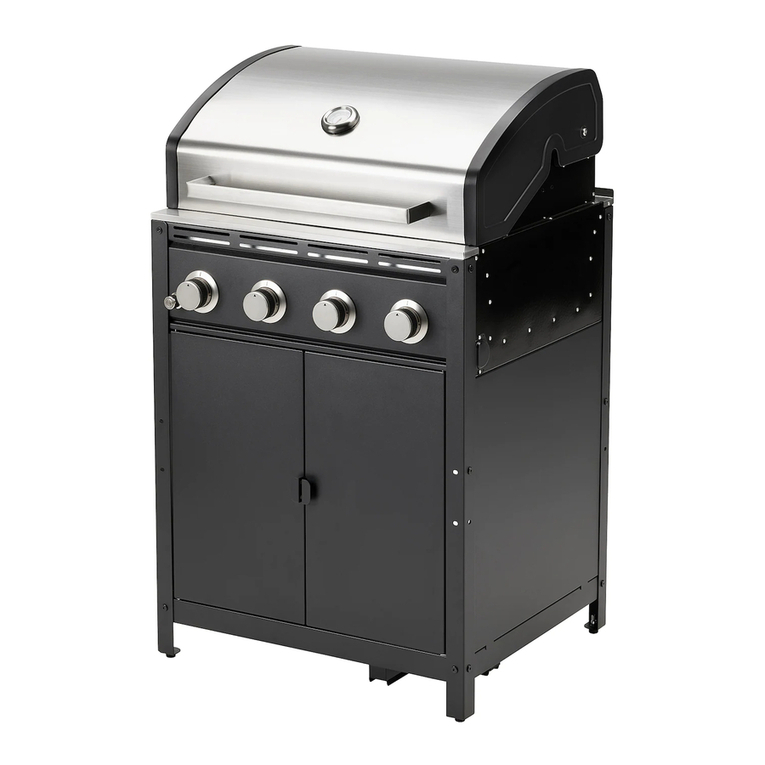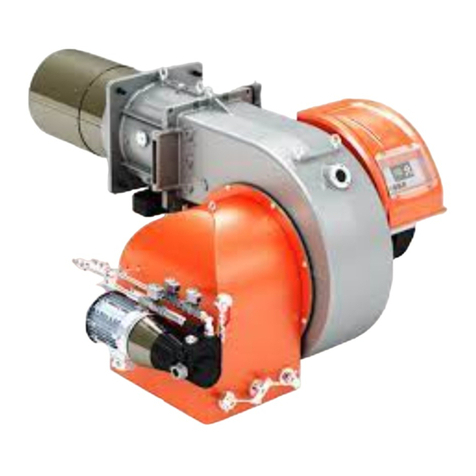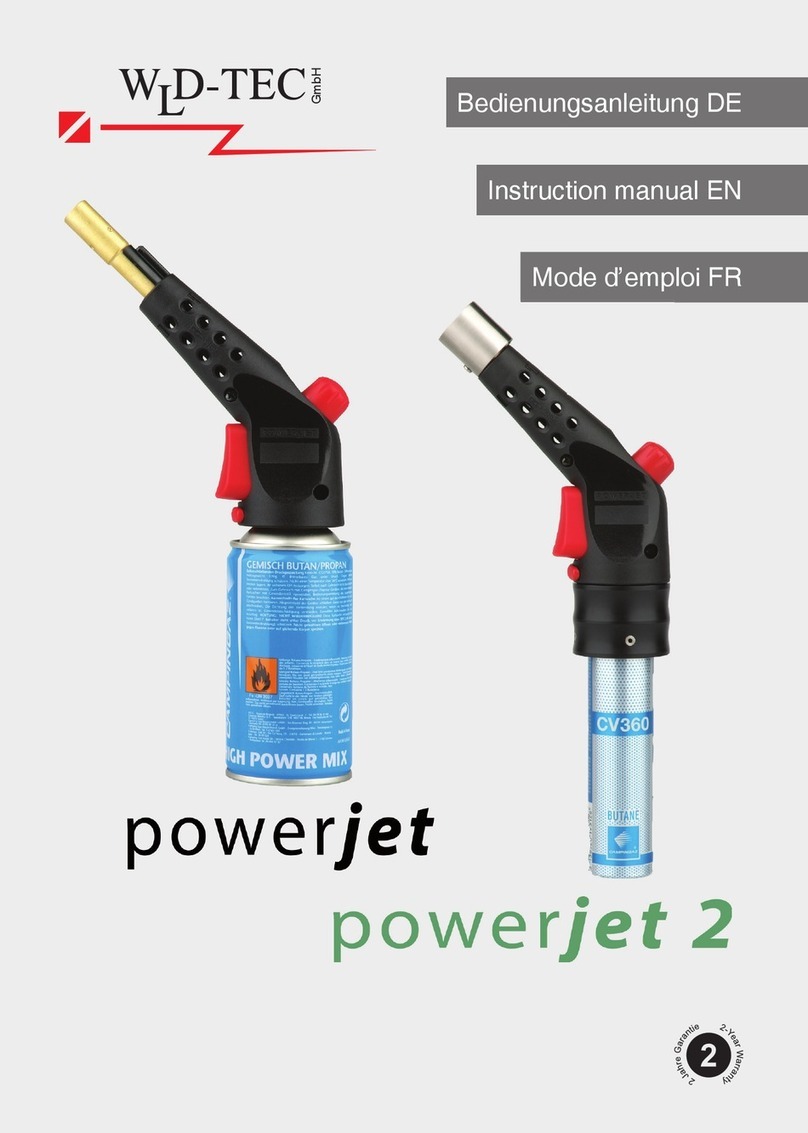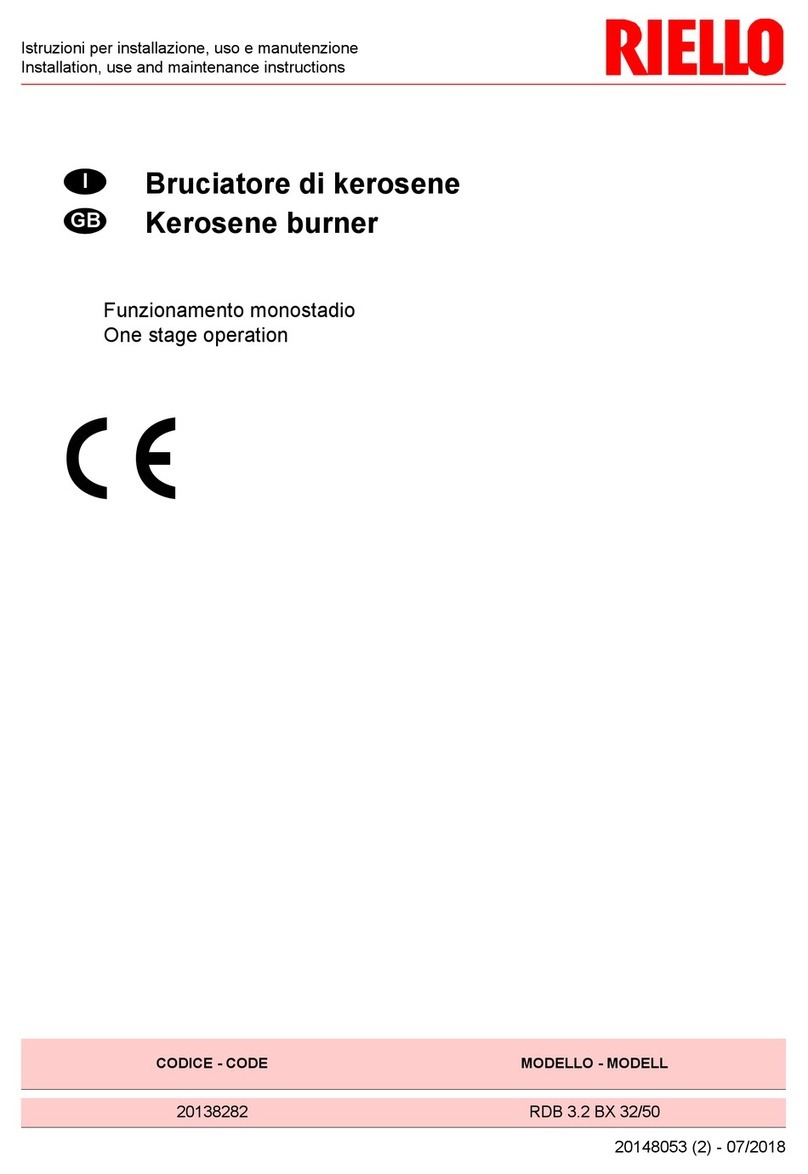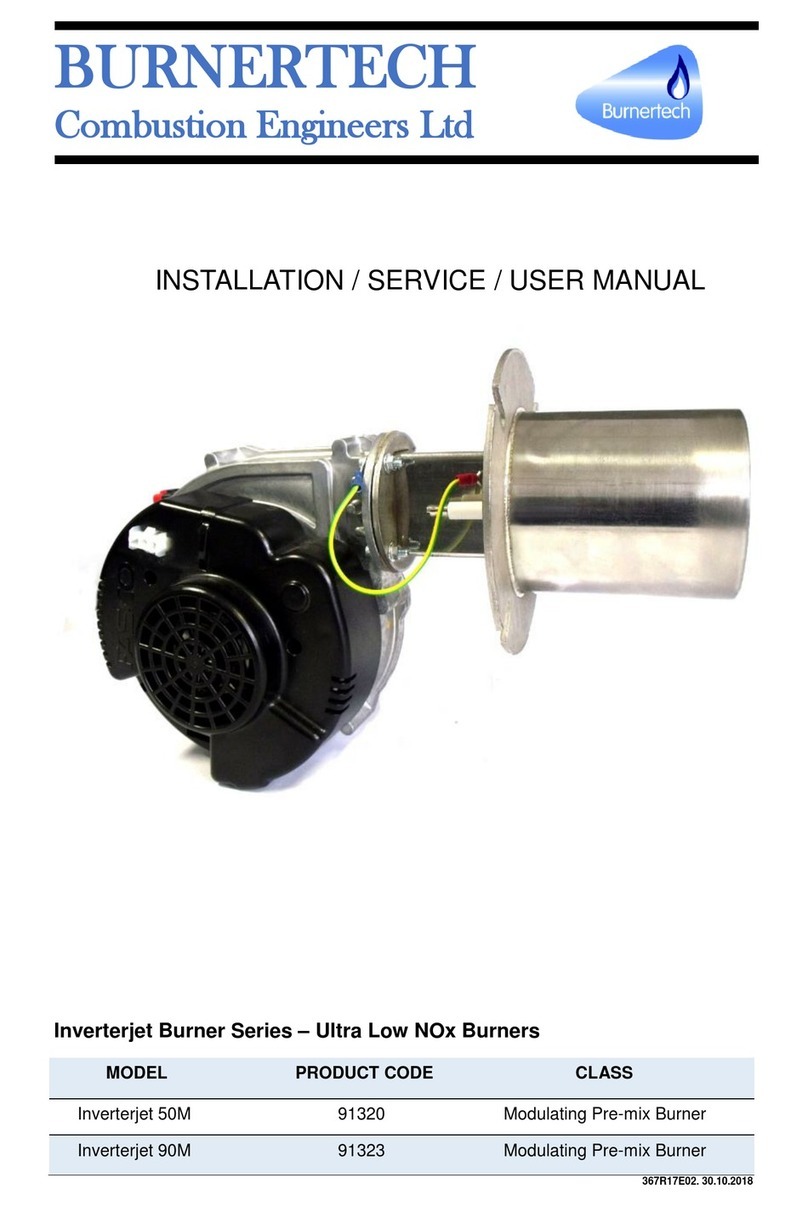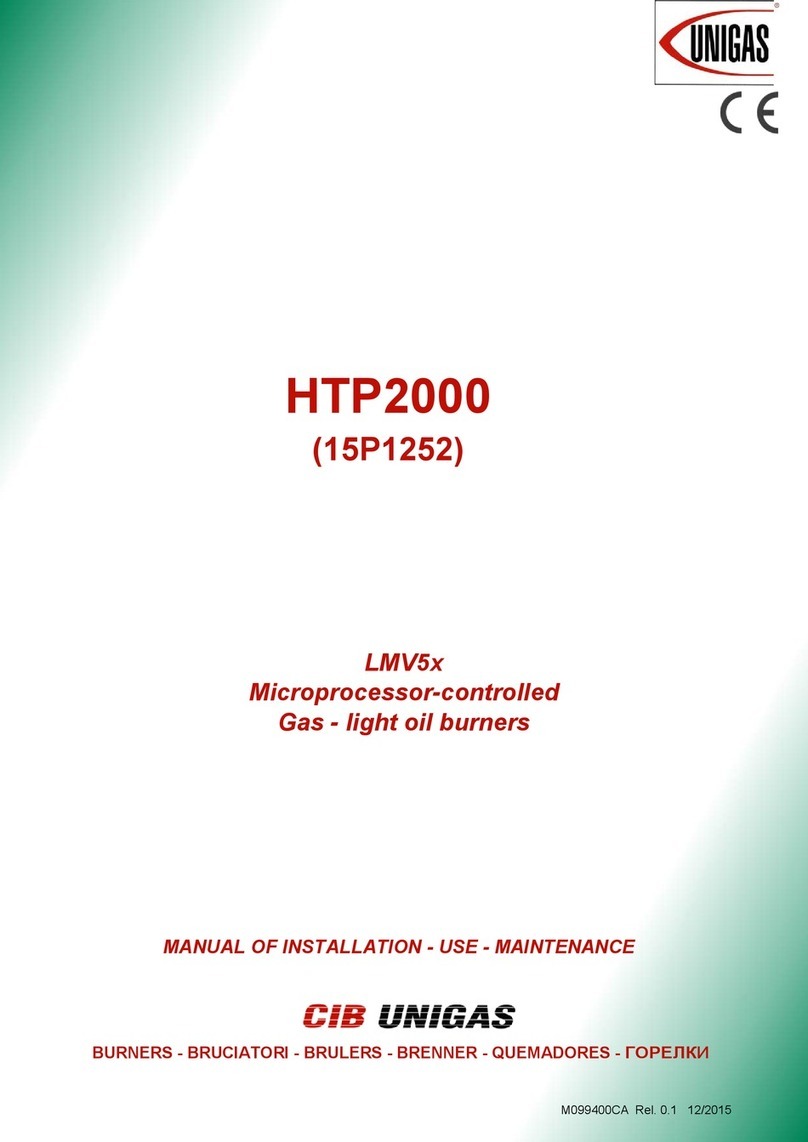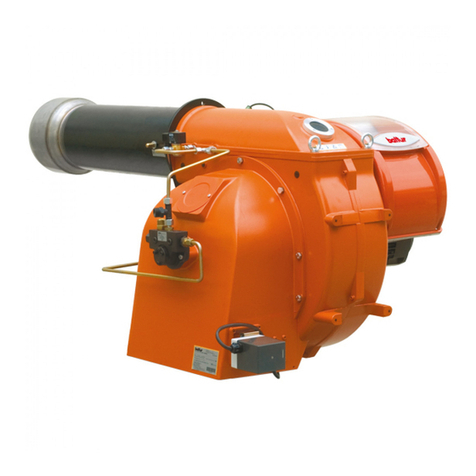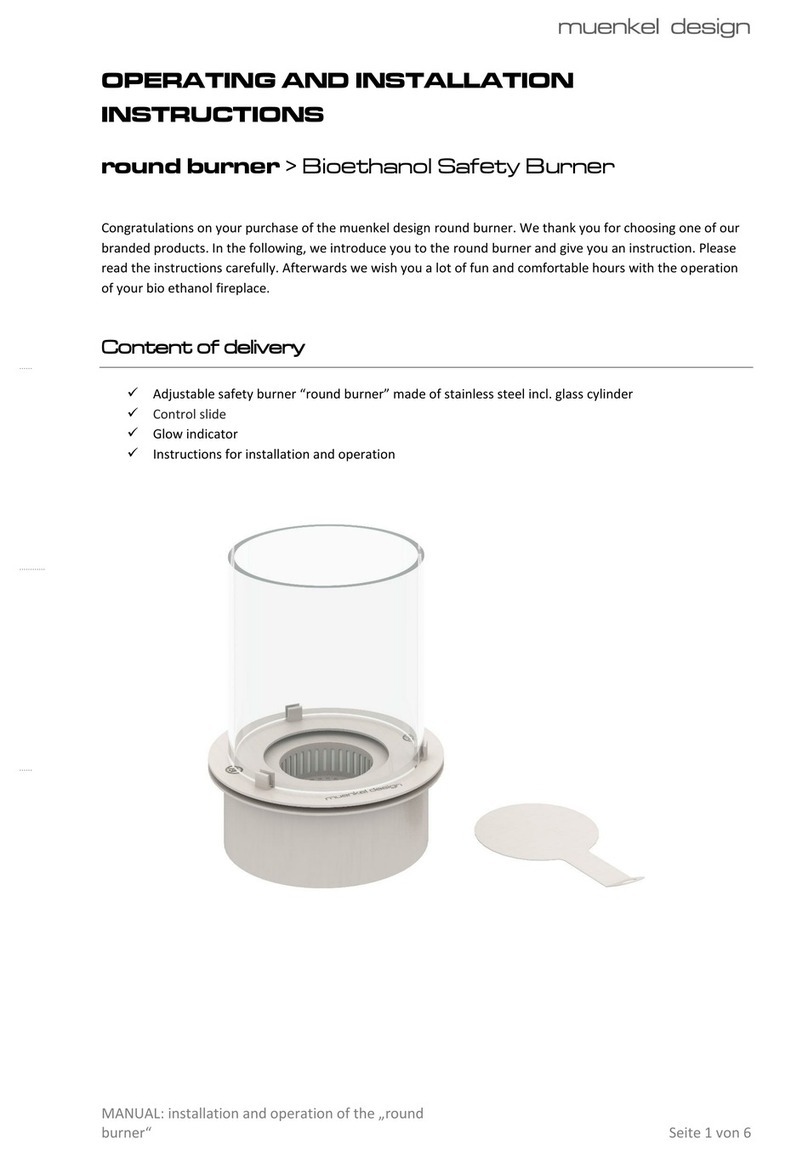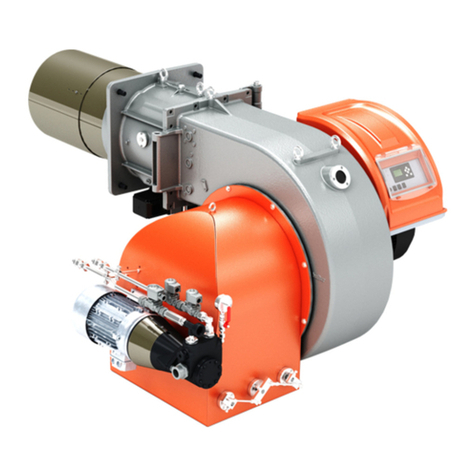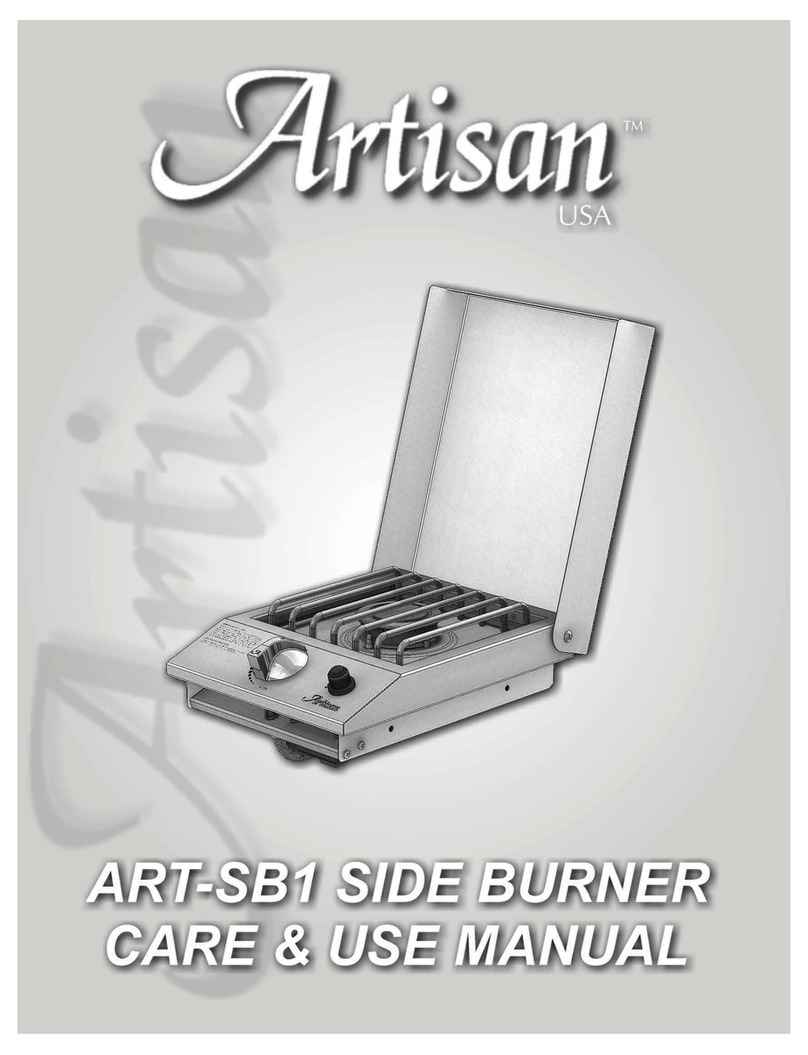Installation / Service / User Manual BURNERTECH
1
Content
1Declaration ................................................................................................................................................. 2
2Technical Information ................................................................................................................................ 4
2.1 Technical Data .................................................................................................................................. 4
2.2 Technical Description of the Burner Parts........................................................................................ 4
2.3 Burner dimensions and weight.......................................................................................................... 5
2.4 Burner operation ............................................................................................................................... 6
2.4.1 Control operation........................................................................................................................ 6
2.4.2 Basic sequence of operation.................................................................................................... 6
2.4.2.1 Burner Program.................................................................................................................... 6
3Installation.................................................................................................................................................. 7
3.1 General Installation Information....................................................................................................... 7
3.2 Burner Mounting............................................................................................................................... 8
3.2.1 Standard Burner Mounting Detail............................................................................................ 8
3.3 Gas Installation ................................................................................................................................. 9
3.4 Electrical Installation .......................................................................................................................10
3.5 Basic Electrical Safety .....................................................................................................................10
3.5.1 Burner Wiring Diagrams –Inverterjet M Series....................................................................11
4Commissioning......................................................................................................................................... 12
4.1 Commissioning procedure ...............................................................................................................12
4.1.1 Turning on the Burner ..............................................................................................................13
4.1.2 Commissioning operation ........................................................................................................13
4.1.2.1 Maximum rate CO2...........................................................................................................13
4.1.2.2 Minimum rate CO2............................................................................................................13
4.1.2.3 Burner Heat Input.............................................................................................................13
4.1.2.4 Burner Sequence .............................................................................................................14
4.1.3 Test Mode ..................................................................................................................................15
4.1.3.1 PC USB Interface................................................................................................................15
5User Instructions....................................................................................................................................... 16
5.1 Limitations on use of Burner............................................................................................................16
5.2 Using the Burner..............................................................................................................................17
5.2.1 Start up.......................................................................................................................................17
5.2.2 Stand-by Mode..........................................................................................................................17
5.2.3 Heating Mode ............................................................................................................................17
5.2.4 Burner operation .......................................................................................................................17
6Servicing................................................................................................................................................... 18
6.1Service Inspection............................................................................................................................18
6.1.1 The condition of the burner head............................................................................................18
6.1.2 The condition of the electrodes...............................................................................................18
6.1.3 The condition of the electrical circuits....................................................................................18
6.2 Service operation..............................................................................................................................19
6.2.1 Re-assembly..............................................................................................................................19
6.3 Fault Finding....................................................................................................................................20
6.3.1 Lockouts/Blockings...................................................................................................................20
6.3.1.1 Lock-out reset .....................................................................................................................20
6.3.2 Maintenance Notes...................................................................................................................21


